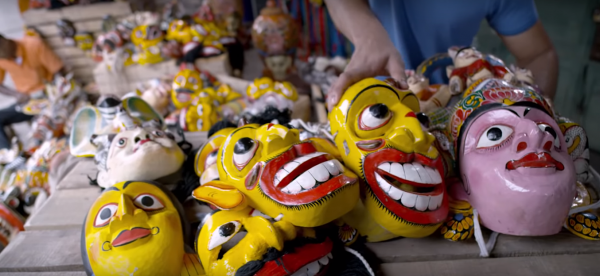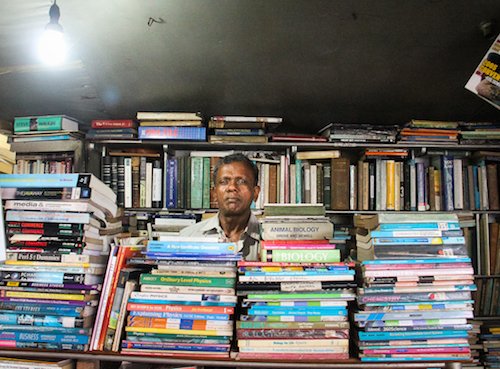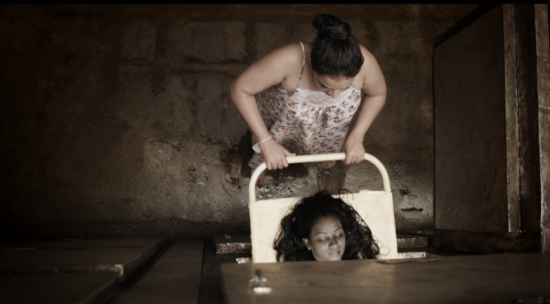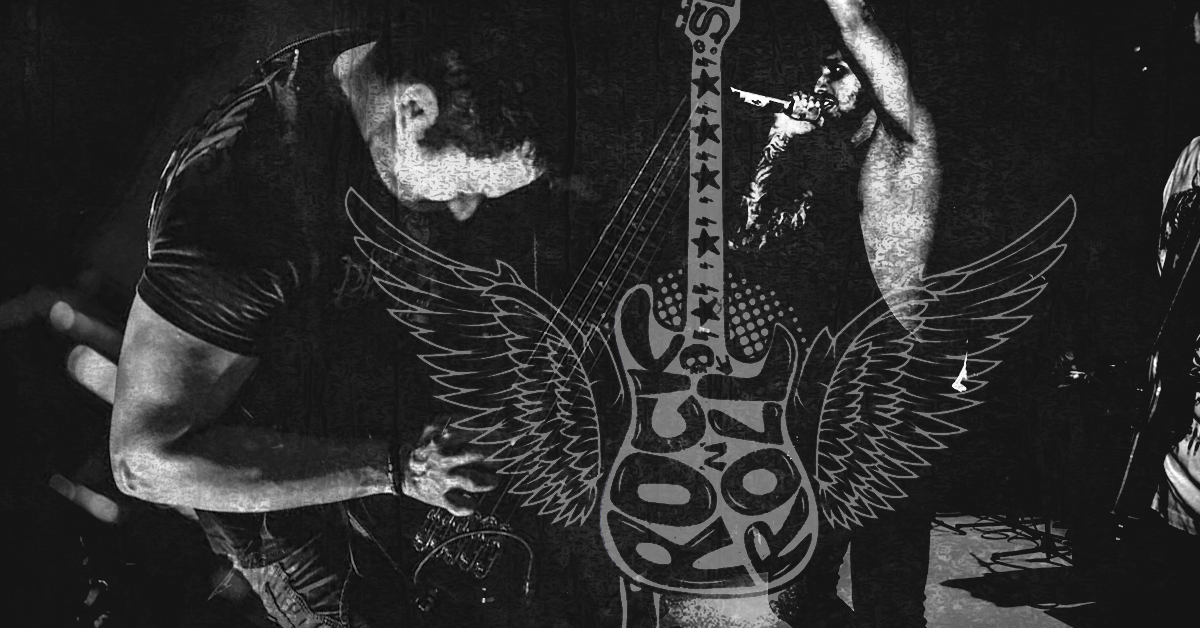
Tishan Wickremeratne* works a 9–5 job in an office on Galle Road. He’s been to university and is working his way up the career ladder — he feels a promotion is coming up soon. He’s in a long-term relationship, lives in a Colombo suburb, and catches the bus to work.
But when the week is done, he swaps his tie for a skull t-shirt, slips out of his work shoes and laces up his leather boots, and trades his watch for a spiked wristband: he switches to speaking the visual language of metal music. Wickremeratne is one of many Sri Lankan metalheads looking to an aggressive and punchy genre of music to help let loose.
With its screeching guitars, blistering drums, and impassioned screams, metal is raw and emotional. Headbanging and brawling in a mosh pit gives concert-goers a chance to shake off the frustrations of anything from a lousy week at work to an unsavoury political situation.
Metalheads are united by more than just an unofficial uniform — they also share a sense of solidarity. This fellowship, combined with the cathartic release it facilitates, means there’s more to metal than just scraps and screams. “Metal, for me,” said Kandyan punk metal band Nuclear Mantra’s vocalist Omesh Yapa, “is the healthiest coping mechanism I’ve ever had.”
Getting Into The Groove
Many are drawn to metal for its powerful and energetic sounds, and are driven to let loose in the form of physical, and occasionally violent, dance moves—like headbanging—or scrapping in a mosh pit. “When you look at it from the outside, you’d think people are trying to kill themselves — but really, it’s just an aggressive dance,” said Tony Jayathilake, lead guitarist of Sri Lankan groove metal band Mass Damnation, and a collaborator on avant-garde progressive metal project Nevi’im and hard-rock band R.A.G.E., with a laugh. “Even getting hurt — that makes you feel alive.”
Feeling alive is what Jayathilake and his bandmates try to evoke through their music. Pulsing drums and distorted guitar riffs that evolve from bar to bar force listeners to keep pace with the song. Groove metal, according to Jayathilake, is a sub-genre of heavy metal that in a live setting—or at home—you’re forced to move around to. “It’s really physical. You feel something in your gut, and you can’t just stand there and wait — you have to move!” he said.
Moving is instrumental to metal. “The aggression in metal is a response to frustration,” Yapa told Roar Media. “Metal music evokes very primal feelings, and dancing unleashes them.”
Musically, its forceful style and no-nonsense lyrics speak to fans. “Initially it was the raw sound that appealed to me,” said Jayathilake about his formative experiences with metal music. “It’s all about that release a heavy riff or a scream can give you.”
Lyrically, Mass Damnation’s upcoming album discusses social stigma, politics, religion, and even global warming: “Anything that would affect us on a personal level, we try to paint into a song,” Jayathilake explained. “[Metal] in general talks about day-to-day issues and their psychological impact, and can help lift up people going through a rough time.”
Of his own love of metal, Yapa said, “It’s the honesty in metal that gets me—they talk about real issues.”

Community
“[The metal scene] was the first group of people I really identified with,” Yapa told Roar Media. “Growing up being the kid that never fit in, after entering the metal scene, I was suddenly around people who welcomed me with open arms.” Yazmin Yousuf, a promoter of Sri Lankan metal music through the radio programme Yes FM’s Home Grown and her own website decibel.lk, says the community has had a formative influence on her life. “[Metal] is the music that made me,” she said. “It’s been there for me, and it’s a part of who I am.”
Even though a metal concert may seem like a sea of uniformity, insiders say that there is plenty of room for individual expression. “Metal gigs are a place where anything goes,” Jayathilake remarked. “It’s all about freedom of thought, and being in a space where, at least for a moment, you’re free of social expectations.”
For many Sri Lankan youth constrained by traditional and conservative norms, metal is an opportunity to experiment with fashion and music; it has also given them the space for discussions on politics, society, and emotional issues.
“Kandy is uber-conservative,” Yapa said, about the city he lived out his late-teens in. “What helped me when I moved there from Colombo was metal. There were some metalheads in my school van. We became a group, and we would often meet up to talk about music and to walk around town with our band tees.” It is this conservative backdrop that breeds a rebellious counter-culture—like the metal scene—especially in cities like Colombo, Kandy, and Gampaha.
“Metal is not just music — it’s fashion, an attitude, and for some people, a way of life. It’s really a place where anyone can find themselves,” Yapa said. “Especially for those who haven’t had a great childhood, or were bullied or something, or found it hard to fit into society: metal is a place where you will be accepted.”
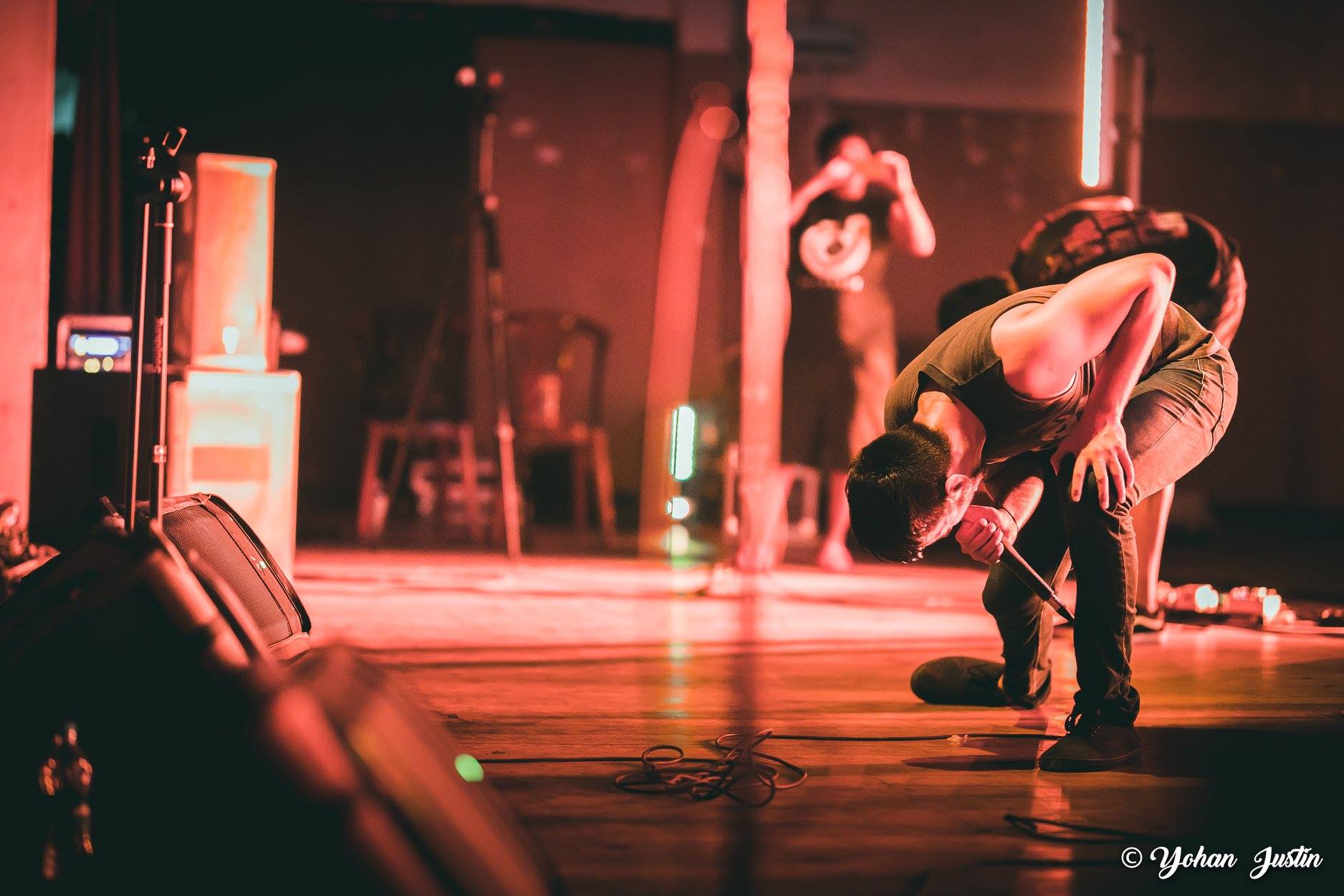
Is There Money In Metal?
Despite a thriving scene, maintaining a metal band in Sri Lanka isn’t an easy task — most musicians in the genre work full-time and have to keep their musical interests as a side gig. Belonging to a genre that is generally critical of commercialisation, most metal bands aren’t looking to make big bucks as much as they are hoping to make their music tenable. “Keeping the band alive can be quite costly,” Jayathilake said. “With practices and maintaining instruments, we usually end up contributing to the band from our own pockets.”
This isn’t due to a lack of talent, however. Bands like Stigmata and Paranoid Earthling have established their presence in the subcontinent and beyond, and up-and-coming Mass Damnation has secured a spot at February’s Bangalore Open Air in India, where the finals of the Wacken Metal Battle for the Indian subcontinent will be held. The winner of these finals will make their way to the annual Wacken Open Air in Germany, one of the largest metal festivals in the world, with well over 100,000 daily visitors.
The potential for Sri Lankan metal is enormous. According to Yapa, Sri Lankan metal is extremely diverse, with local bands sometimes working in niche subgenres of the music, such as doom metal—which intends to evoke a sense of impending doom—or aggressive and chaotic war metal. The exploration of these corners of metal has won local bands—like Genocide Shrines, who make music about post-war Sri Lanka—international fans. Despite this, there isn’t a lot of money to be made as yet.
According to Yousuf: “[In Sri Lanka] we have a scene, and not an industry, hence it’s difficult to have full-time work as a musician. As an island, we lack a foundation from which artists can benefit monetarily — [a system of] royalties, artist management centres etc.” These missing foundations affect musicians like Jayathilake, who remarked: “For me, being fully financially dependent on our music has never really been viable. I hope the industry gets to a point where musicians can start earning from it, but we’re nowhere near that yet.”
There are, however, some avenues accessible to bands to earn. Merchandise—in the form of band tees, CDs, and jacket patches—is how full-time musicians supplement their income. “Merchandise and ticket sales are pretty much the only ways bands can get something back, at least for now,” Jayathilake said.

What about the music itself? With modern listeners moving away from physical discs towards digital streams, it’s hard for Sri Lankan bands to utilise mediums like Spotify or Apple Music, which are designed for—and monetise in—foreign markets. “We released our EP [Catalyst of Hate (2013)] online,” Jayathilake said. “But Sri Lankans don’t really buy music off iTunes.”
Because of this, the band, who recently released the first single of their new album, are looking back to a pre-digital music industry to finance their work. “For our [upcoming] album, we have a goal to get a record deal…from India, Europe, America or somewhere like that,” Jayathilake told Roar Media. “If we get that, then we can start earning, and widening the reach of our music through physical CDs and merchandise — but that’s a long way away.”
Local record labels do exist, but are still quite small, and unwilling to sign on metal artists. In the meantime, buying CDs and EPs can be a simple way of supporting local artists. This is something both Jayathilake and Yapa encourage. “I mostly listen to Sri Lankan bands on YouTube, but I buy the CDs for my collection, and (because) they need the money more than more financially successful foreign bands,” Yapa said.
Despite this rift between an analog past and a digital future, Yousuf remains hopeful: “All will change as technology does, and with the acceptance of the art, with time.” The growing pains of digitising music may have begun to affect local bands, but working towards a future of streaming and embracing the advantages and accessibility of the internet as a platform for all artists—including those occupying a space away from the mainstream—will save Sri Lankan metal bands from being left in the dust.

